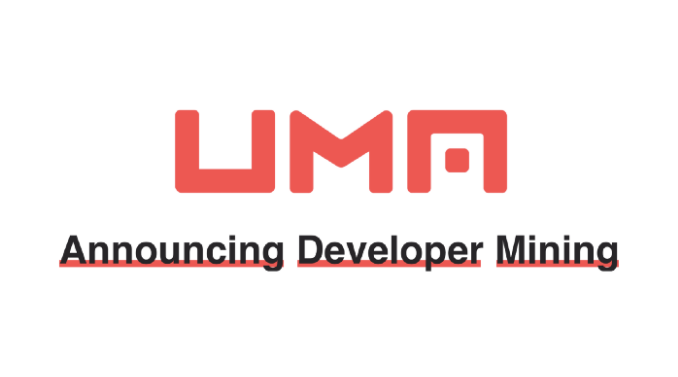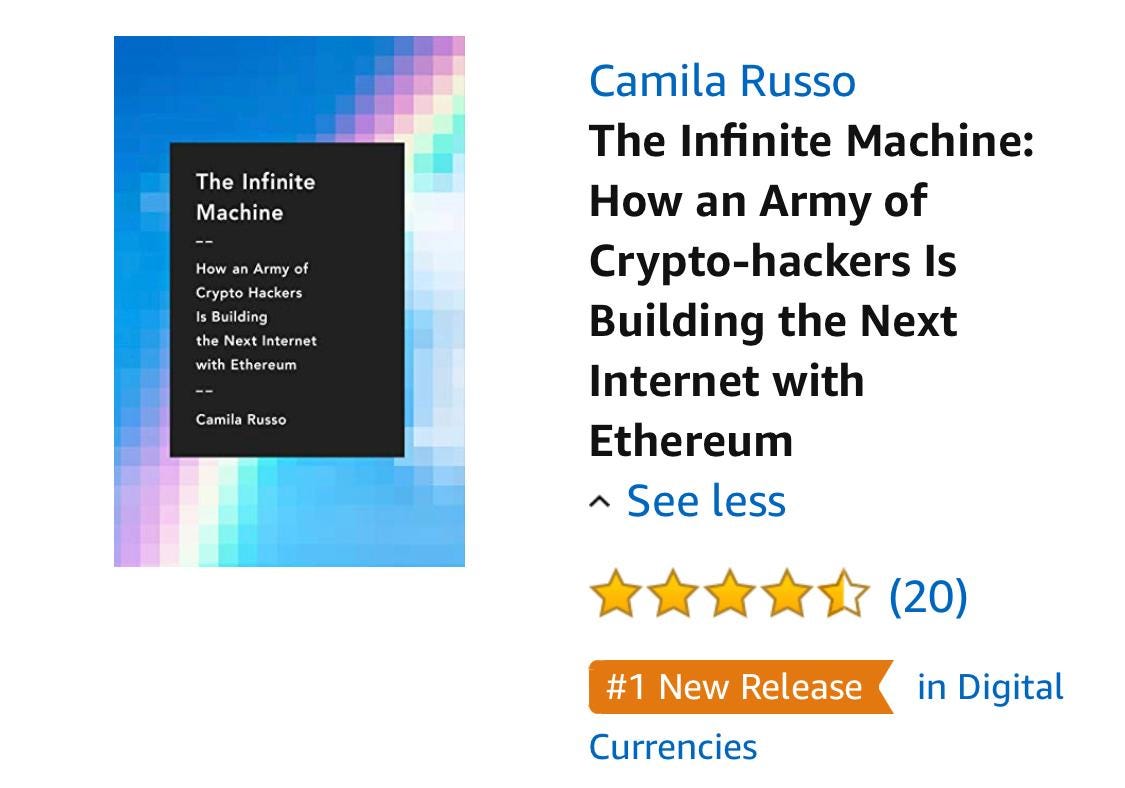Hurray! You Can Now Stake ETH. But Should You?
Eth2 deposit contract was released today! Also, UMA introduces "developer mining," Notional aims to bring fixed-rate lending to DeFi.
Hello Defiers, as the US is still counting votes, there’s another historic milestone to track: ETH is surging into the ETH2 deposit contract which was released today, after several years of work towards a more scalable, decentralized and less wasteful blockchain. The Ethereum community has taken an important step towards the successful transition to a new chain that’s designed to become the base layer of finance and Web3.
Should you become an Eth2 validator?
UMA’s developer mining
Notion’s fixed-rate loans
The open economy is taking over the old one. Subscribe to keep up with this revolution. Click here to pay with DAI (for $100/yr) or sub with fiat by clicking on the button below ($10/mo, $100/yr).
🎙Listen to this week’s podcast w/ Lil Miquela creator Trevor McFedries:
🙌 Together with Zerion, a simple interface to access and use decentralized finance, Sorare, a fantasy football game with officially licensed cards on Ethereum, and Near, a high-performance proof-of-stake blockchain that interoperates with Ethereum.
The Risks and Rewards of Becoming an Eth2 Validator
The deposit contract for Ethereum’s new proof-of-stake chain was released today. If ~524k ETH is deposited this month, the new chain will go live on Dec.1. Potential rewards for contributing to that pile of ETH are enticing, but as is usually the case with high returns, there’s also high risk.
So far, 5.7K ETH from 467 depositors has been sent to the contract, according to data by Dune Analytics.
Serenity Now
The launch of the PoS chain is Phase 0 in Ethereum’s transition to an upgrade known as Serenity or Ethereum 2.0. This matters to DeFi: Ethereum is effectively the base layer for this open economy and it has struggled to keep up with the ecosystem’s explosive growth. Eth2 is meant to support the traffic required for Ethereum to achieve its original goal of being a “world computer,” and today’s release marks an important step in that direction.
💡 Proof of Stake is a consensus mechanism, like proof of work. It’s the system used among the participants of a distributed network to confirm transactions. Proof of work relies on the electrical power miners use, while Proof of stake relies on the amount of the network’s native tokens deposited (or “staked”) by validators. Miners and validators get token rewarded for dedicating their computing and economic power, respectively, to the network.💡
The release isn’t symbolic: DeFi traders can now stake their ETH and become validators in the network to earn token rewards.
What stakers get:
A return on their ETH. Initial yields will be 15% - 20% when staked ETH is less than 1M ETH, and will gradually decrease to 7% as the stake rate approaches 5M, according to Staked.
A digital receipt that tells the network you're a validator, known as Beacon Ether, or BETH. This is not a distinct token, but there’s speculation it will be traded in secondary markets.
A non-fungible token from the POAP team, that proves you were an early Ethereum validator.
Directly contributing to the strength of Ethereum 2.0.
The risks for stakers:
They won’t be able to withdraw their staked ETH or rewards until transfers are enabled on an unknown date that’s likely at least two years from now.
They’re penalized or “slashed” if they act maliciously and they lose staked ETH in proportion to their damage to the network.
Validators can also lose a small amount of ETH (equal to the rewards for participating) if their node goes offline, or what’s known as “leakage.”
There is the potential for software bugs which could result in lost funds.
How to Stake
You can stake ETH directly to the contract and hold the private keys to the validator, or use staking as a service platforms, like Rocketpool and Staked.
Rocketpool, which is in beta, will allow users to stake as little as 0.01 ETH. Deposits receive rETH tokens which represents the capital staked and its rewards and can be traded immediately.
Staked is live and requires users to stake ETH in multiples of 32 (as is the case when staking directly to the contract). It offers an interface to monitor Eth2 nodes and is distributed across cloud and Eth2 clients to prevent penalties. Yield for staking via Staked is currently 12.4%.
Sponsored Post
Filecoin Frontier Accelerator: Supercharge your Web3 journey with a $20K grant
For the entrepreneurs and builders passionate about a better Internet, Filecoin Frontier Accelerator is the place to be. Here’s a little more about what we do - our 12 week accelerator program offers a straightforward $20K grant, with projects eligible for up to $1 million in follow-on investment. Besides the experience of building on the world’s largest decentralized storage network, tap into a global network made up of leading investors, blockchain-native founders, and technical innovators from the likes of UNICEF Ventures, Winklevoss Capital and Fenbushi Capital.
We’re excited about teams that are building across the Web 3 technology stack:
1) Core infrastructure driving the transition towards a more decentralized, efficient and resilient Web, supporting essential functions such as networking, computation and storage.
2) Middleware solutions that extend the utility of Filecoin beyond the blockchain protocol. Some examples include data oracles, plug-and-play blockchain toolkits, developer APIs, block explorers or search engines.
3) Applications that provide and enable end user interaction, running the gamut from gaming to social media to content marketplaces.
We’re at a pivotal moment in the development of the Web. Join us and apply by 15 November.
UMA Replaces Liquidity Mining with Developer Mining
UMA plans to allocate 50k tokens per week to developers who build synthetic assets on its permissionless derivatives protocol starting on November 10th. At the time of writing, this equates to roughly $325k worth of weekly rewards.
The program is set to distribute up to 35% of the total token supply to focus on those building on the protocol, rather than simply aggregating liquidity. UMA’s liquidity mining program attracted $52M in TVL at its peak.
“Liquidity is not loyal, and it is not an end-in-itself,” UMA said in a post yesterday. “Risk Labs never intended to merely buy liquidity; the intention has always been to encourage liquidity for products people actually want to use.”
Weighted Rewards
Rewards are weighted by the value locked in each synthetic asset contract, meaning the more TVL a synth attracts, the greater share of UMA tokens the creator will receive. Creators can design their own liquidity mining programs using UMA rewards.
Incentives are determined at the contract deployment level, ensuring that only creators who are verified on a whitelist are eligible for rewards. The verification process is meant to “discourage non-productive products, such as ones that might be designed to soak up rewards but with no actual utility or transfer of risk,” according to the post.
The UMA team says this is the first step in an evolving experiment. Still, projects should take note as liquidity mining has quickly shifted to a recipe for yield, rather than as a fundamental way to build sustainable communities.
Notional Showcases Fixed Lending AMM
Notional, a DeFi lending protocol, is rolling out its fixed-rate loans in a public beta with support from investors including 1confirmation, IDEO, Parafi, Nascent, Coinbase and Polychain.
Lenders can provide capital with a guaranteed return at specific maturity dates, while borrowers can take out a loan knowing exactly what their interest payment will be. Roughly 280k Dai was supplied to Notional’s first fixed-interest earning token, called fDai, according to this Tweet.
While fixed-rate lending makes up the majority of the US debt market, variable rates and volatility have so far dominated DeFi. Notional is the latest in a growing number of protocols trying to change that.
Projects including UMA, Yield Protocol and Mainframe are also testing the fixed lending market, all with different approaches to ensure tokens will trade at par upon maturity. Larger DeFi protocols like Aave offer fixed borrowing rates but are yet to support fixed lending rates, although this is likely to be a part of Aave V2 in the coming months.
Notional is betting its custom AMM, designed to keep slippage low no matter how far away maturity is, will give it an edge.
The Defiant is a daily newsletter focusing on decentralized finance, a new financial system that’s being built on top of open blockchains. The space is evolving at breakneck speed and revolutionizing tech and money. Sign up to learn more and keep up on the latest, most interesting developments. Subscribers get full access at $10/month or $100/year, while free signups get only part of the content.
About the founder and editor: Camila Russo is the author of The Infinite Machine, the first book on the history of Ethereum, and was previously a Bloomberg News markets reporter based in New York, Madrid and Buenos Aires. She has extensively covered crypto and finance, and now is diving into DeFi, the intersection of the two.










